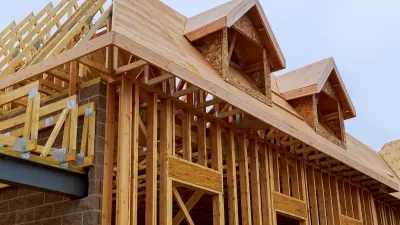The market for luxury apartment rentals is booming; the market for affordable rentals is not.

Home ownership is not the prized goal that it once was. Increasingly, higher-income individuals and families are opting to delay home ownership or forgo it altogether. Rental vacancies are historically low in urban centers around the country, as affluent households are migrating in droves out of the suburbs and back to the center. Developers, unsurprisingly, are choosing to build and renovate for this lucrative end of the market.
"They can also benefit from making a building mostly market-rate units and leaving a small percentage of units as affordable-housing units, which earns them tax advantages but still allows them to make a hefty profit," reports Gillian B. White.
However, the token affordable-housing units in luxury buildings are insufficient to significantly affect the market.
Rent inflation has typically mirrored overall inflation; but costs are now inflating disproportionately for lower-income households. A recent study by The Federal Reserve Bank of New York finds that "rent inflation is consistently higher for lower-cost housing units than it is for higher-cost units."
Add to this the country's growing wealth and income inequality, and the outlook for low-income urban renters could be dismal if the trend continues unabated.
"In order to change that pattern, intervention is likely needed in the form of government policies that encourage and reward builders to build affordable units in the first place and then discourage them from converting them to pricier units in the future," suggests White. "Until then, millions of low-income Americans will continue to face fewer options and higher prices."
FULL STORY: There Are Plenty of New Apartments Being Built—Just Not Affordable Ones

Maui's Vacation Rental Debate Turns Ugly
Verbal attacks, misinformation campaigns and fistfights plague a high-stakes debate to convert thousands of vacation rentals into long-term housing.

Planetizen Federal Action Tracker
A weekly monitor of how Trump’s orders and actions are impacting planners and planning in America.

In Urban Planning, AI Prompting Could be the New Design Thinking
Creativity has long been key to great urban design. What if we see AI as our new creative partner?

King County Supportive Housing Program Offers Hope for Unhoused Residents
The county is taking a ‘Housing First’ approach that prioritizes getting people into housing, then offering wraparound supportive services.

Researchers Use AI to Get Clearer Picture of US Housing
Analysts are using artificial intelligence to supercharge their research by allowing them to comb through data faster. Though these AI tools can be error prone, they save time and housing researchers are optimistic about the future.

Making Shared Micromobility More Inclusive
Cities and shared mobility system operators can do more to include people with disabilities in planning and operations, per a new report.
Urban Design for Planners 1: Software Tools
This six-course series explores essential urban design concepts using open source software and equips planners with the tools they need to participate fully in the urban design process.
Planning for Universal Design
Learn the tools for implementing Universal Design in planning regulations.
planning NEXT
Appalachian Highlands Housing Partners
Mpact (founded as Rail~Volution)
City of Camden Redevelopment Agency
City of Astoria
City of Portland
City of Laramie





























